© europarl.europa.eu
Europe’s most enduring drugs marketplace was known as Archetyp Market. It operated on the so-called “dark web”. Like more traditional markets that sell illicit goods it had to retain a low profile, and it did. At least, it did until a series of co-ordinated police actions were undertaken in Germany, the Netherlands, Romania, Spain and Sweden, principally targeting the site’s administrator, its moderators, its top vendors and its technical infrastructure. Some 300 police officers were deployed to undertake the enforcement actions and to secure the vital evidence needed to close the market for good.
The Archetyp market had been in business for more than 5 years and had amassed a customer base of some 600,000 users around the globe. Nobody knows exactly the volume of drugs that have changed hands there, nor exactly what type (or types), but its transactions, totalled together, came to at least €250-million. It had 17,000 listings and was one of the very, very few dark net markets permitted to sell fentanyl and other highly potent synthetic opioids, thus contributing to the growing threat they posed to Europe and wider afield. The joint police actions was effective, taking down the infrastructure in the Netherlands, while its administrator, a 30-year-old German national, was arrested in Barcelona, Spain, while parallel actions in Germany and Sweden scooped up one of the market’s moderators and six of the wealthiest and most successful vendors, together with assets of some €7.8-million. Not a bad day’s work, which put an end to a criminal “service” that had allowed the highly-successful trade in illicit drugs to flourish.
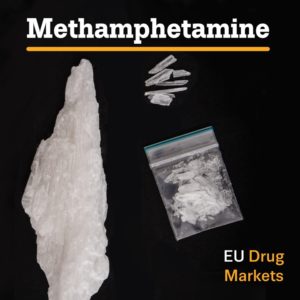
The drugs involved included cocaine, MDMA (3,4-methylenedioxymethamphetamine), amphetamines and synthetic opioids. Indeed, it was one of the world’s largest drugs marketplaces, ranked alongside the notorious “Dream Market” and “Silk Road”, former leaders in the highly lucrative online drug trafficking trade.
The coordinated cross-border police operation has successfully closed down one of the dark web’s most successful and long-running drugs markets, cutting off supply of some of world’s most dangerous substances to global criminal gangs. “With this take-down,” said Jean-Philippe Lecouffe, Europol’s Deputy Executive Director of Operations, “law enforcement has taken out one of the dark web’s longest-running drug markets, cutting off a major supplyline for some of the world’s most dangerous substances.” This success he finds very encouraging. “By dismantling its infrastructure and arresting its key players, we are sending a clear message: there is no safe haven for those who profit from harming others.” It is, indeed, a big step forward but it seems unlikely that it will put an end to Europe’s thriving drugs trade or its gangsters. The gangsters are not, of course, engaging in crime out of need. As Aristotle put it in the 4th century BC: “The greatest crimes are caused by surfeit, not by want.” The trouble is that the criminals never seem to believe that they have extracted enough money from the world at large.
From you and me, in other words. And so the criminality goes on, Europol notwithstanding. In other words, Archetyp Market may have gone but you could place a pretty safe bet on its replacement very soon. There is demand for drugs. They’re illegal of course, so therefore very expensive, offering big profits for those able to obtain them, ship them from source to market and then sell them to the world’s many, many addicts, including those living or working in Europe.
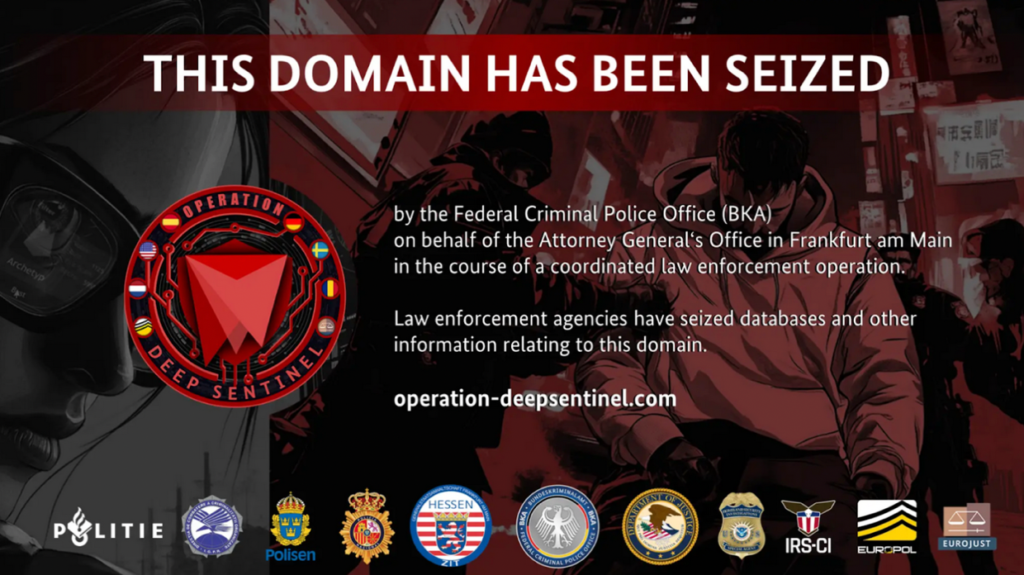
Needless to say, the drugs market, like any market involving trade, whether legal or not, is constantly subject to change. As EUROPOL itself has pointed out, how drugs are used and trafficked is constantly changing and the ways of conducting the trafficking are growing in their technical and organisational complexity. What is not changing is the profitability of the drugs trade, which is what fuels that traffic. Every year EU citizens spend tens of billions of euros on illicit drugs. I suppose the big question is: why? In any case, it seems unlikely to stop. But at least Archetyp’s website now carries a banner that says it has been closed. One of the problems is that it’s not just the addiction of people (often young people) to illegal substances but also to the way the business feed international terrorism and the involvement of armed groups engaged in making matters worse, sometimes for political reasons but perhaps mainly for profit. Whover said “crime doesn’t pay” clearly didn’t know what he was talking about. But the way the market evolves poses enormous challenges for Europol and its partner organisations, such as the European Monitoring Centre for Drugs and Drug Addiction (EMCDDA) and Interpol.
Let’s just take a quick look at some of the things that go into modern drugs. Not all of them will be available at your local pharmacy, of course. The Claviceps purpurea fungus, for instance, gives us LSD (lysergic acid diethylamide), the favourite recreational substance of 1960s hippies in that decade’s counter-cultural heyday.
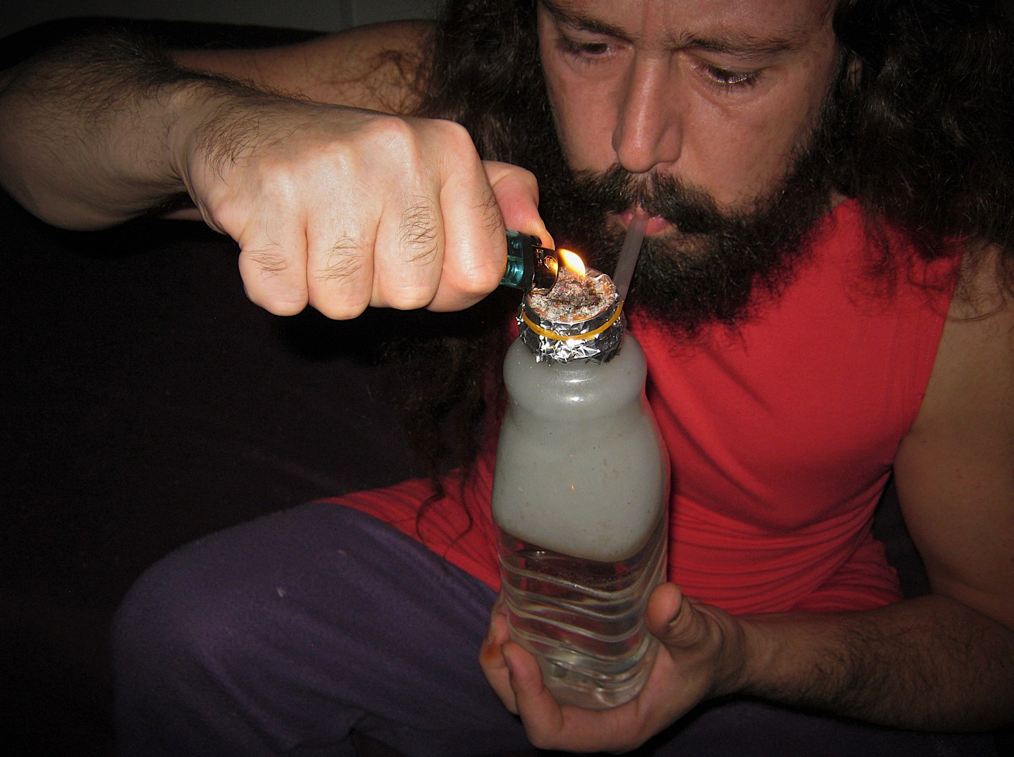
If you take it you will forget your troubles and everything else, too, as you float around in a psychedelic wonderland with weird sounds and visions. It can by synthesized from ergot alkaloids that are produced by a fungus that infects cereal crops. Of course, that decade also gave us (in my opinion) the best pop and rock music ever, but I’m biased by my age. In any case, there are plenty of alternative psychedelic substances from which to choose, if you’re interested. Psilocybin is derived from another type of fungus, the psilocybe mushroom. It’s often referred to as “the magic mushroom”, for reasons I don’t need to elaborate, I’m sure. Good luck finding that; I don’t believe it grows in Europe, although plenty of other things do. DMT comes from a plant called Psychotria viridis, but that can also form part of another narcotic, known as 5-MeO-DMT, which is made from the Sonoran Desert toad. That may reduce its appeal for some people. It would be a bit harder to pack and to conceal, too, especially if it croaks from time to time. And who would swallow a raw toad? Many of those drugs are legally produced to use against post-traumatic stress disorder (PTSD), and they are said to work in some cases, but not all. Of course, their effective use in various types of medicine is of no interest to the dealers who smuggle the stuff into countries where its ownership is not permitted. Their only interest is in the profit it can generate, which is quite considerable, of course.
The use and consumption of psychedelics, of course, go back a long way, certainly predating today’s crime gangs. It’s safe to say, however, that crime itself is as old as humankind, and gangs are a natural development of criminal activity. As for the use of narcotics, that is very old, too.
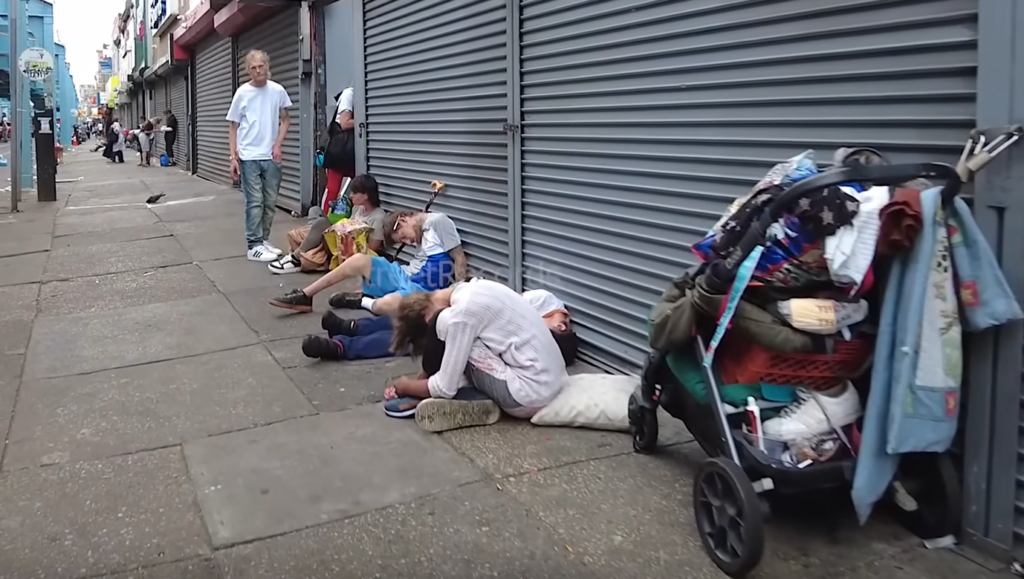
They’re not necessarily bad but experts agree they should only ever be administered by trained professionals. This is not, of course, an approach favoured by drug dealers and criminals. The fact that the drugs can be useful in overcoming suicidal thoughts is of little interest to them. Psychedelic drugs work by altering perception and in that way, they can cause hallucinations, which can be fun for the user or can turn out to be a truly terrible nightmare. You won’t find something like MDMA for sale from a street corner dealer, but it’s an interesting narcotic, being capable of delivering psychedelic effects by the unusual means of increasing the release of serotonin in the brain and recent studies suggest that it’s capable of promoting what’s called synaptic plasticity in the brain, whatever that might be.
This is all a long way from people like Timothy Leary, the American clinical psychologist who supported the idea of using psychedelic drugs, albeit cautiously. On one occasion he said: “I am 100% in favour of the intelligent use of drugs, and 1,000% against the thoughtless use of them, whether caffeine or LSD”. Psychedelics have been used in the treatment of mental issues for decades, not just since the accidental discovery of LSD in 1938 by the Swiss chemist Albert Hofmann. More recently, it’s been viewed as a way of easing the symptoms of bipolar disorder. In 1953, the CIA conducted a secret research project, giving unknowing Americans high doses of psychedelics without bothering to ask for consent. Naughty, naughty! The drug itself can have hallucinogenic effects, so its popularity in the 1960s is not very surprising. Nor, of course, is the use of certain plants known by native American tribes to have such properties. Their use goes back hundreds of years, not mere decades, and were usually administered by some kind of tribal healer. As far as we know the people using them or selling them, did not make fortunes from their knowledge and skills. Today’s dealers in such goods, however, do, so it’s hardly surprising that we now find organised crime deeply embedded in the narcotics market. Furthermore, since psychedelic drugs have an impairing effect on memory, the users are less likely to be able to identify their suppliers. Psychedelic medicines may certainly have a place is relieving the symptoms of addictions and demoralizing afflictions, including alcoholism and eating disorders, but only if properly prescribed and sensibly deployed. Use by gangs wanting to make a fast buck regardless of the consequences is not recommended, although that seems to be what is happening.
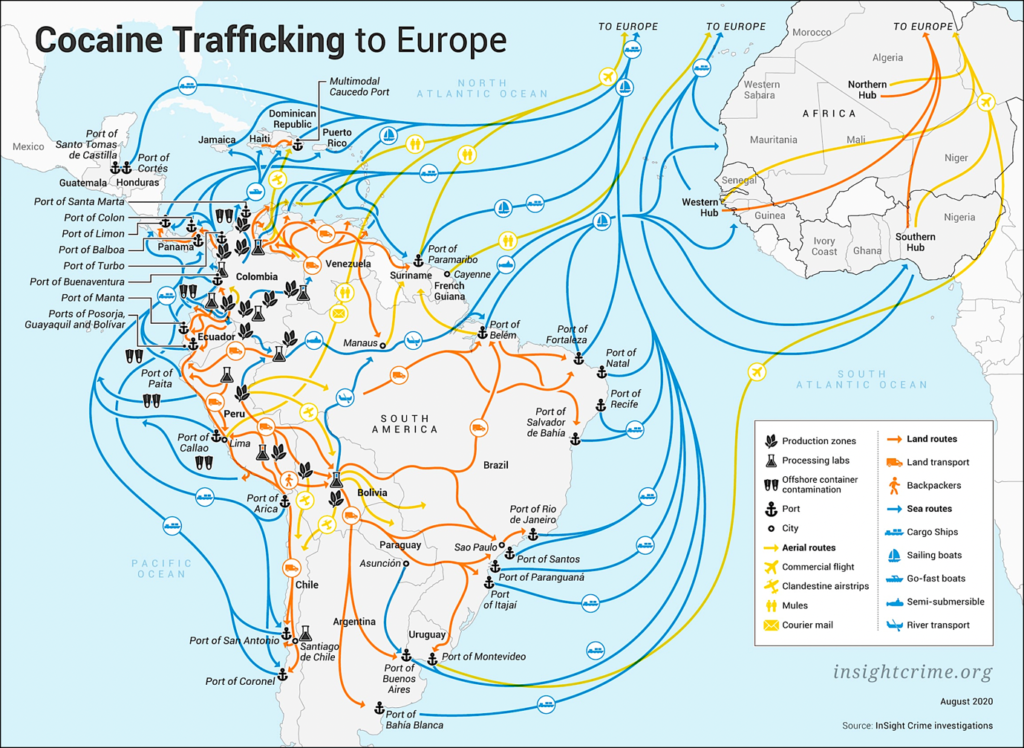
Indeed, according to Europol and the DEA, the Federal Agency charged with monitoring drugs and their misuse, the market involves a wide variety of actors in various roles connected with the trafficking and distribution of controlled substances, such as methamphetamine and cocaine hydrochloride (HCl), many of those in the United States involving Mexican criminals, who have also become major players in Europe, alongside EU drug traffickers, at least in some member states. The actors fall into various categories, such as the “cooks”, who are engaged in producing the narcotics, various intermediaries who are responsible for purchases and transportation (including from South and Central America into Europe) and sorting out the logistics. There are also brokers, responsible for contacts between suppliers and markets, and various others who undertake money laundering and arrange illegal financial services, repatriating, according to Europol and the DEA, millions of Euros arising from the illegal drugs trade and ensuring it gets back to Mexico. Apparently, the influence of Mexican drugs cartels is deeply entrenched. If you’re looking for, say, fentanyl, methamphetamine, cocaine, heroin or cannabis, these are the people you’ll have to deal with. Just don’t forget that the Sinaloa Cartel and the Jalisco New Generation Cartel are extremely violent and powerful organisations with a long history. They’re getting stronger, too, and they were planning to establish cocaine-smuggling routes from Columbia to airport facilities in southern Italy using private jets. This is big business for the completely corrupt.
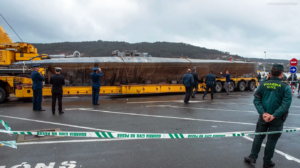
You could argue that the illicit drugs trade provides work for a lot of people. The trouble is, it kills a lot of people, too. Of course, large numbers of “workers” also cost a lot of money, but the drugs trade the gangsters run also generates massive (and untaxed) profits for the crooks. In a report published in 2019 it was reported that the illegal drugs trade in Europe alone generated some €30.56-billion, while two years earlier the trade in the United States had been valued at some €143.4-billion. The gangs can afford to pay their “workers”: it’s a very profitable business (and I don’t imagine that many of them would pluck up the courage to demand a rise). The gangs fight amongst themselves for supremacy, hoping to get an ever-larger share of the enormous profits they make. Amazingly (and you may think stupidly) many of the gang operatives are tattooed with the names of their gangs, which is a bit like wandering about with a label around one’s neck that reads “I am a crook – I kill people”. It makes it a breeze for the police, you might think.
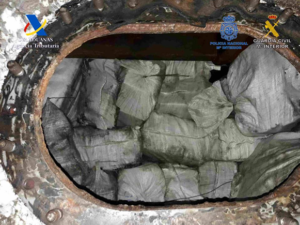

They’re quite inventive when it comes to finding ways to hide the “goods” in which they trade. Mexican criminal gangs managed to smuggle 1.3 tonnes of cocaine and 2.5 tonnes of methamphetamine hidden in blocks of cellular thermal concrete, which presumably would provide an effective shield against the scanners being used by customs officials. There is a lot of cooperation between gangsters exporting their goods and gangsters distributing them at the other end (and collecting the money). The Mexican cartels most often favour maritime shipments to smuggle large quantities of drugs from Latin American to the EU, very often concealed in foodstuffs, construction materials and various other commodities whose arrival in European ports won’t raise eyebrows. The onward journey is handled by local criminal gangs working in cooperation with the Mexicans. Those journeys often involve the use of ferries but also trucks with hidden compartments. They also sometimes use the postal services for getting smaller quantities to their final users, in what amount to the sorts of quantities in which children’s sweets are sold. It takes a lot of careful organising but the vast profits to be made make it worthwhile for the crooks.
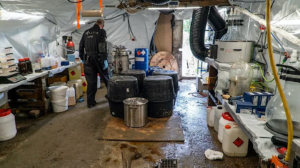
Another interesting facet is the way in which the drugs trade has now spread from the big cities into the smallest rural community. Cannabis and cocaine are just as popular amongst the hayricks and grazing cattle. In rural France, for example, French police recently raided a luxury villa in the south-east of the country that had been turned into a factory producing methamphetamine.
It had been set up by a group of Mexicans who had rented the villa as soon as they arrived in France, clearly with a mind to profit from their expansion overseas. They were also recruiting and training up locals to carry out the work on their behalf. But the European Union’s Serious and Organised Crime Threat Assessment (SOCTA) has reported that the criminal networks have shown “remarkable agility, combining flexibility in their activities with resilience against disruption”. It says they are “adept at turning challenges and geopolitical crises into opportunities.” It seems they use legitimate businesses that they have set up to help them, largely by laundering their profits, which are vast. SOCTA says it’s one way they have been able to retain control over long periods of time. “The abuse of legal business structures is a key factor in their resilience,” says SOCTA. Of course, they occasional lose workers, either imprisoned or killed by law enforcement officials, but they are easily replaced. There’s no shortage of putative crooks out there, eager for a fast buck.
It’s true to say, unfortunately, that South America seems to have become a breeding ground for criminality and corruption. Just look at Venezuela’s most recent election, at which (according to The Economist) the government claimed a turnout of 43%, although the polling company Meganalis said the real figure was more like 14%, with the overwhelming victory of one candidate being ignored by the government which is now talking about introducing a new voting procedure that would only permit a favoured few to have a vote at all. It’s bad news for oil supplies on world markets (as well as for democracy), while government critics have been sent to prison. It’s not a region pledged to fairness and democracy, which suits the criminal gangs perfectly, effectively allowing them to choose the government. No-one can see a way to end the current idiocy but it’s helping to make rich men richer so it’s likely to continue. The gangs are quick to seize on opportunities to increase and cement their power and influence. Meanwhile, various parts of South America can boast (if that’s the right word) any number of criminal gangs, engaged in similar activities. SOCTA mentions several of these gangs by name: “Thieves in Law” and “Outlaw Motorcycle Gangs” are two of them, but some have branches in other countries, too. Well, they say that it pays to advertise. According to a report for SOCTA, “The threat posed by serious and organised crime remains one of the most significant challenges facing our countries today. Criminal groups are growing increasingly sophisticated.” It’s a worrying development on several levels, SOCTA argues. “They are exploiting technology and global networks, infiltrating legal structures, and recruiting minors to engage in a wide range of illicit activities—from drug trafficking and production to cybercrime, migrant smuggling, trafficking in human beings and all kinds of financial frauds.” It’s an unpleasant picture of some of the world’s most unpleasant people exploiting legitimate enterprises to fund their enormous wealth and their enjoyment of a world to which they do not contribute. Indeed, as SOCTA points out, their effect is entirely negative: “Serious and organised crime has a doubly destabilising effect on the EU. It undermines the EU’s economy, rule of law and society by generating illicit proceeds, spreading violence, and normalising corruption.” Of course, for them corruption and crime are normal.
This is criminality on a massive scale. In a report from April 2024, Europol identified 821 particularly dangerous criminal networks with a total of some 25,000 criminals working for them across the 27-nation bloc. Europol reckons that around 86% of the criminal networks it has identified are capable of infiltrating the legitimate economy in order to hide their activities and also to launder their massive profits. It mentions one particular Italian businessman of Argentinian origin who was, when the case was reported, resident in Marbella, Spain. He specialised in drug trafficking and money laundering while managing a number of largely legitimate companies, including one importing bananas into the EU from Ecuador.
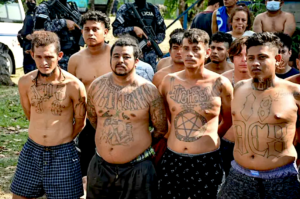
He also owns sports centres in Marbella, along with various commercial centres, bars and restaurants. Europol says he has an accomplice in Ecuador who helps with the importation of cocaine from Columbia to Ecuador and its subsequent distribution within the EU. The report claims that Ecuadorian fruit companies are regularly used to disguise illicit activities and the movement of narcotics. It’s not even unusual activity. Europol draws our attention to the Italian crime syndicate, ‘Ndrangheta, reckoned to be one of the world’s most powerful and richest of its kind, profiting from drug trafficking but also the arms trade, and using its wealth to defraud the tax authorities while investing in Europe’s real estate, supermarkets, hotels and other legitimate enterprises. It’s an activity that certainly doesn’t recognise or respect borders. Its members are said to represent 112 nationalities, with most of them restricting their criminal activities to their own regions in order to keep a fairly low profile, whilst remaining highly profitable, of course. According to EU officials their main activities centre on drug trafficking and corruption. Not exactly “model citizens” then.
Europol says that record amounts of cocaine are being seized across Europe, while drug-related violent crime has been increasing throughout the EU and has become especially visible in, for instance, Belgium and France. Drug trafficking is clearly now a key activity. Furthermore, says Europol, some 70% of the crime networks engage in corruption “to facilitate criminal activity or obstruct law enforcement or judicial proceedings. 68% of networks use violence and intimidation as an inherent feature of their modus operandi”. Some things never seem to change, really; Al Capone would have approved. In Belgium, where Antwerp is the main gateway into the EU for the cocaine cartels of Latin America, gang violence has been rife for years, while drug use is on the increase throughout the country. In fact, federal authorities say trafficking is rapidly penetrating society as a whole. “Organized crime is one of the biggest threats we face today, threatening society with corruption and extreme violence,” said the European commissioner for Home Affairs, Ylva Johansson. She plans to share data with the individual law enforcement agencies of member states in the hope that this will help to better target known criminals.
It’s not just Europe, of course. The United States has recently indicted a Mexican citizen on terrorism charges, although he’s actually accused of helping a drug cartel. The civilised world is taking this kind of gangsterism seriously and those apprehended as a result can expect to face trials under serious charges and, if found guilty, very heavy sentences. It won’t stop crime, of course; nothing ever will. Take the case of Mara Salvatrucha, also called MS-13, a criminal organisation that first arose during El Salvador’s civil war in the 1980s. With some 70,000 members around the world (even in Australia), its criminal activities have risen by some 70% and it’s thought to be one of the most ruthless and deadly gangs in the United States.
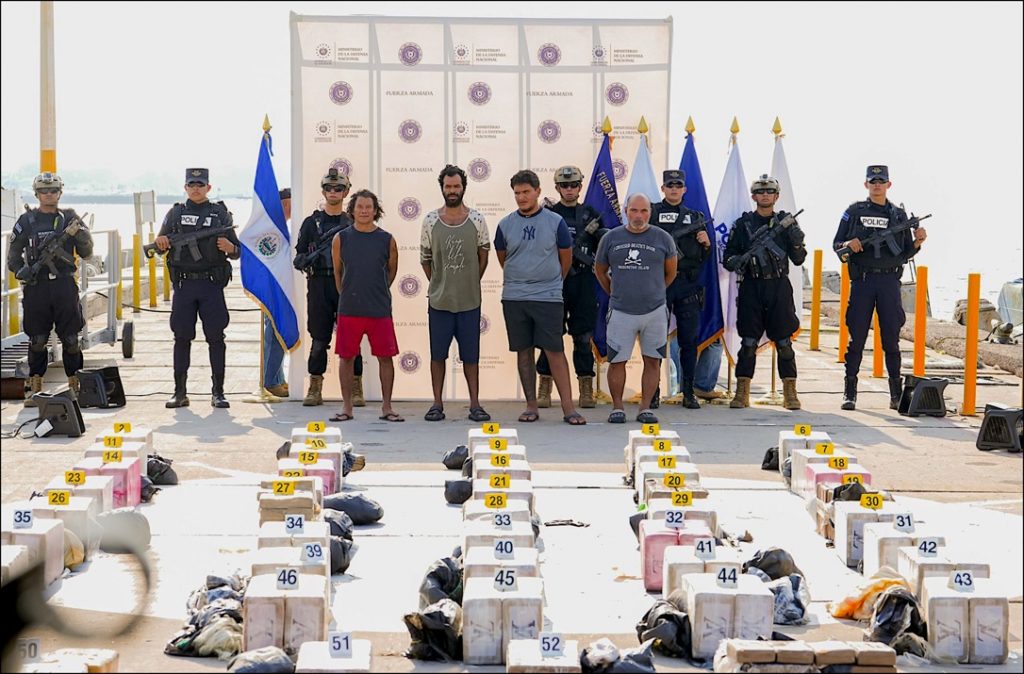
It’s believed that they even have the backing of the FLMN, El Salvador’s ruling political party, with the US actually setting up a special dedicated branch of the FBI to tackle the crooks. The New York Times reckons their profits to run to just over €27- million per year. That’s a lot of money. Arresting gang members will be useful, but I’m sure this won’t dissuade the perpetrators from their criminal leanings although it may at least take some of them out of active circulation for a while, which must be a good thing for the rest of us. Dismantling the many gangs would be a useful adjunct, too. Meanwhile all we can do is keep our eyes open, report anything suspicious to the authorities and try to help with getting the criminals locked up. We’ll never put a complete stop to crime, of course, especially if some otherwise-innocent people take a liking to certain kinds of drug, which would hardly be surprising, especially if they’re in pain. But perhaps we can make the streets just a little bit safer.
T.Kingsley.Brooks@europe-diplomatic.eu

